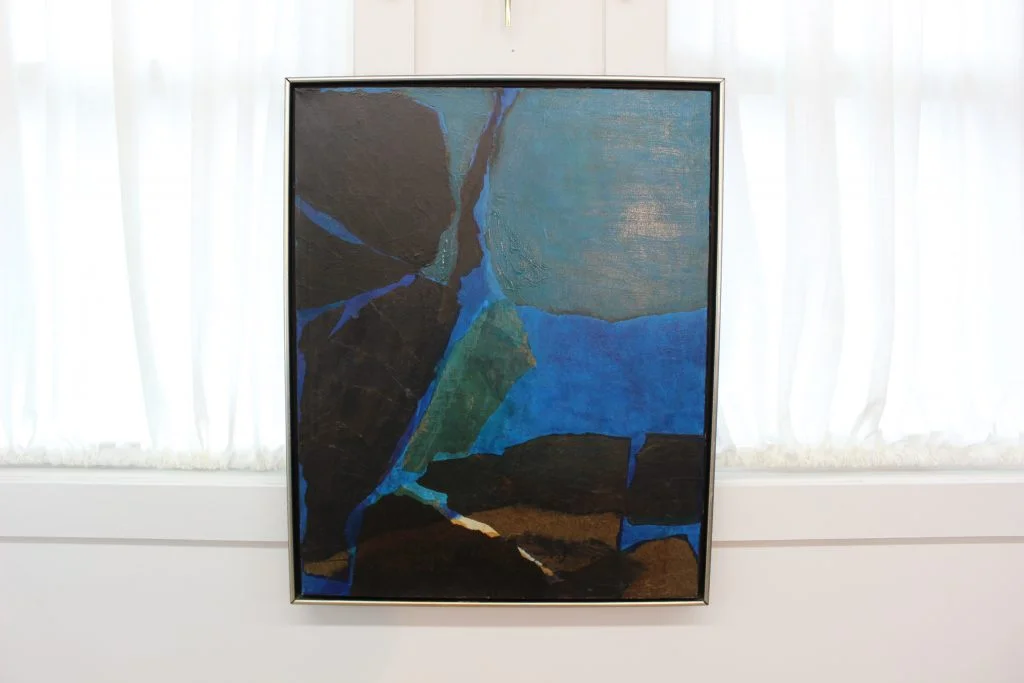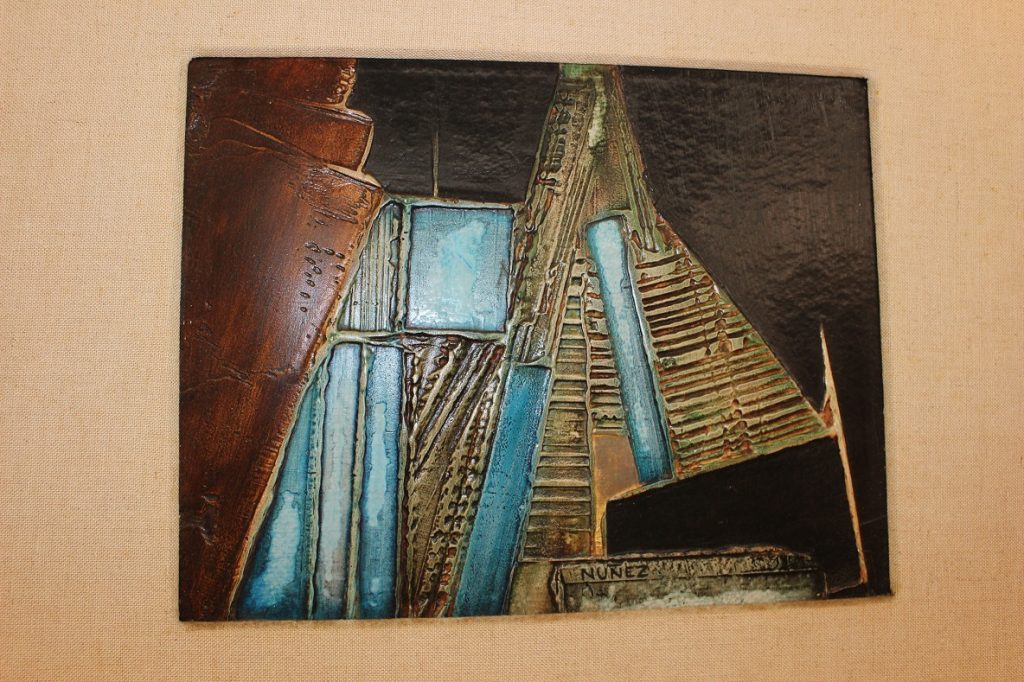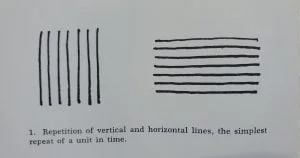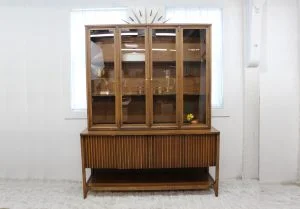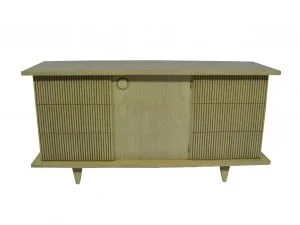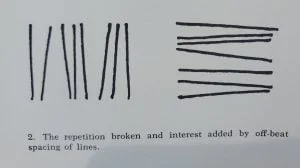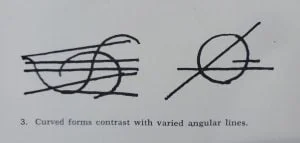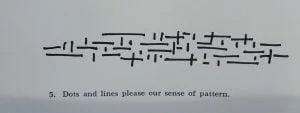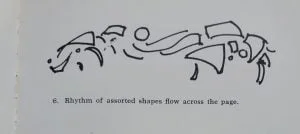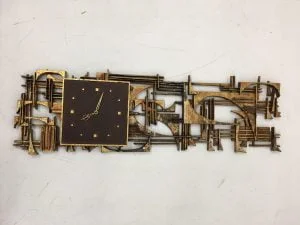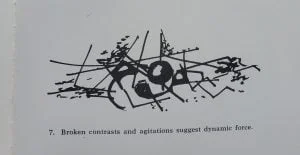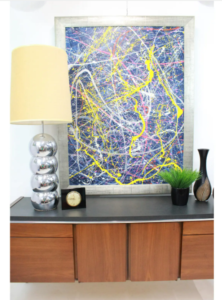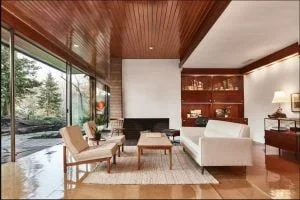Hello friend!
Thank you for coming back to my blog. Today I want to talk to you about abstract art in Mid Century Modern decor. And what I mean with “in MCM decor” is that I will explain a little bit about what is abstract art and its variations, etc but my main focus is to tell you why I believe it goes so well with MCM interiors.
So let’s start with some basic concepts: According to the dictionary of abstract painting; abstract art “is all art that does not recall or evoke reality regardless of whether that reality is the point from which the artist started or not.”
So parting from this basic idea we have all seen several examples of this painting style.
Throughout the history of art, the big artists have painted in the abstract style and have given them their own twist. Cezanne, Van Gogh, Picasso, and Braque used the principles of this style. As you can imagine they all had different styles and interpretations to apply to their own paintings. But let’s see some of the variations within the abstract style:
- Fractured image; this is like a semi-abstract image, that takes a scene and fractures it while the background is represented blurry or almost as when you quickly looked to your side or behind you and saw mostly just the colors and big shapes but no fine details.
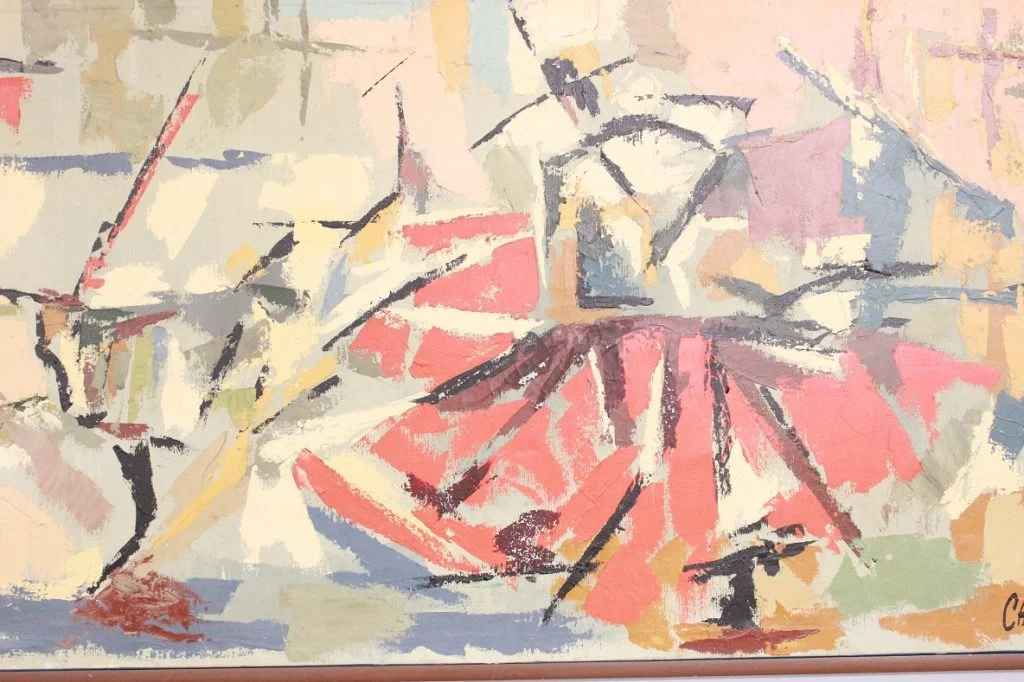
- Spatial forms; this is when they use large forms to represent in the entire canvas. This is neither figurative nor purely abstract.
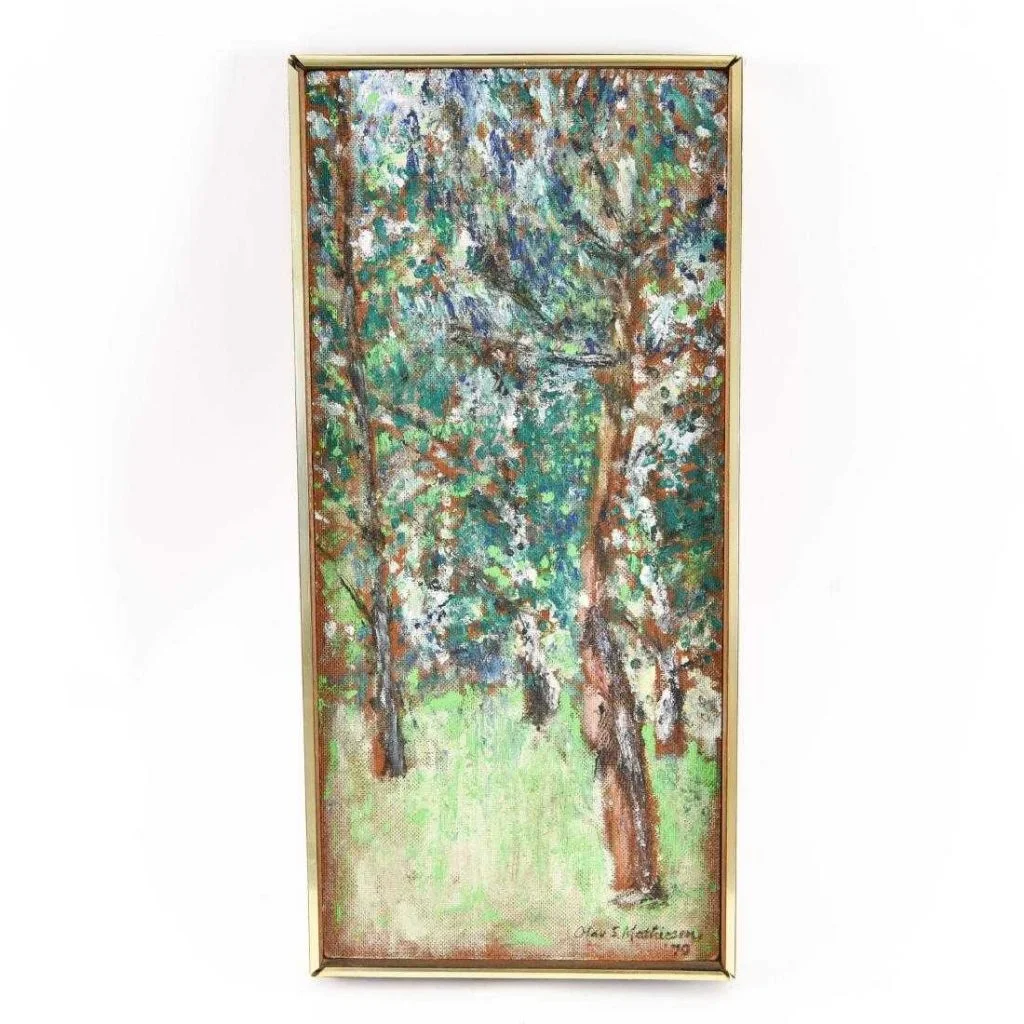
- Image forsaken; the artist uses strong color strokes with a brush or a spatula.
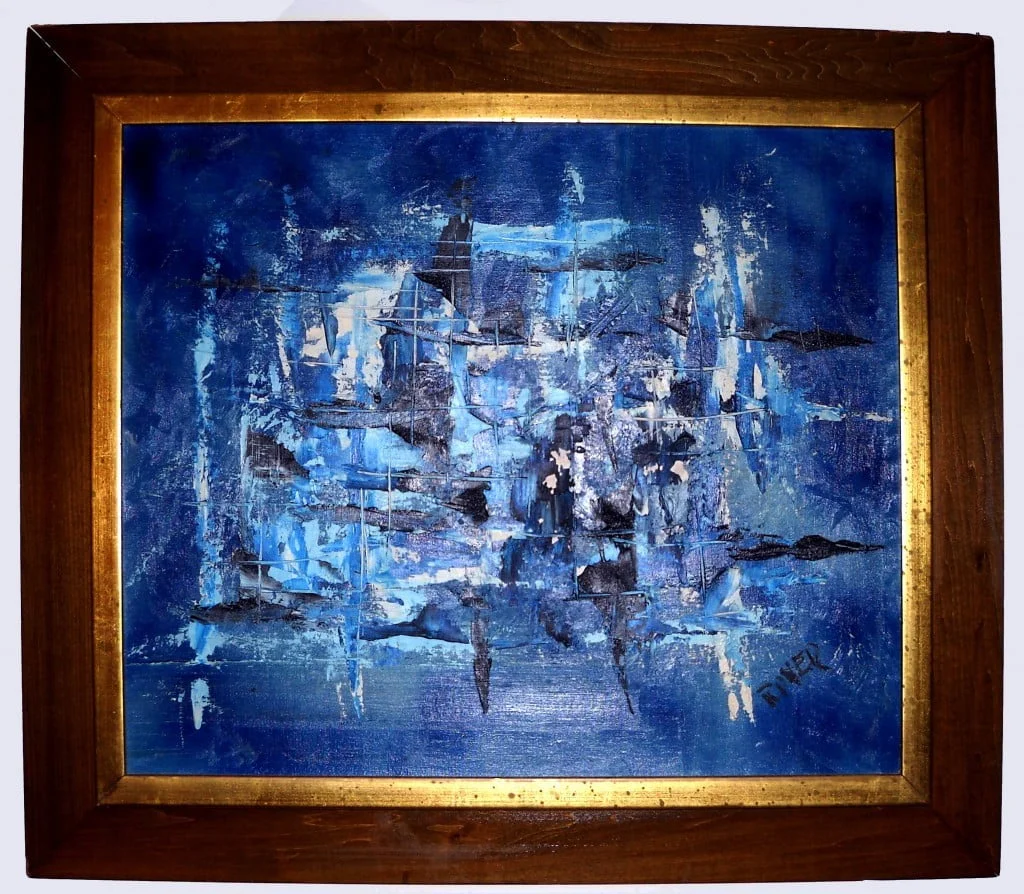
- Abstract expressionism is when the background of the canvas has neutral colors and in the foreground are key small touches of brilliant color.
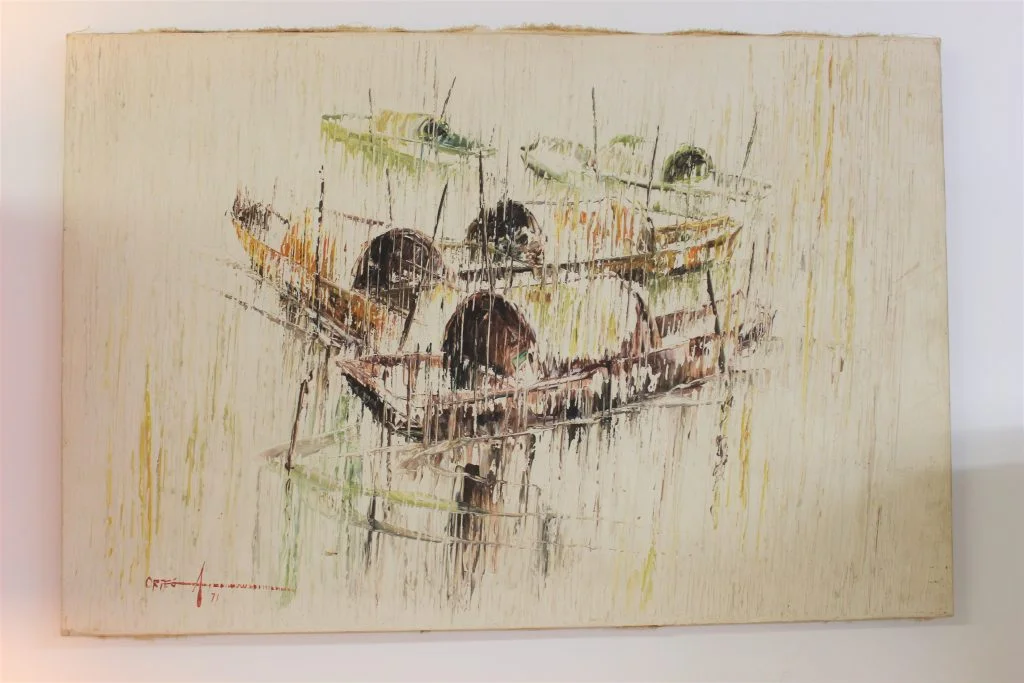
- Experimental color panels; watercolor, crayon or other materials are combined. Within this, they can also use paper, cloth or other materials that can bring texture.
Now let’s talk about the relation between the abstract style principles and the Mid Century Modern period. As we all know at the base of the Mid Century Modern period is the innovation of materials, techniques, and bold colors. We have all been attracted to the strong colors and patterns of the fabrics, the repetition of the shapes and lines, the curves and strong angles, and contrasts of light and black. The origin of all of this is the elementary principles of design.
All of the lines, curves and colors in MCM furniture are pleasing to the eye because in a way it has been thought of as a form of art. The furniture designers not only were really talented people but often were architects, engineers, and brilliant minds that thought about every angle and aspect of the furniture they created and had studied the basic elements of design.
So for easier comparison here is the list of elementary design principles and their examples in MCM furniture. And this connection/root between abstract art and mcm furniture is why abstract art is the best for MCM interiors.
- “Repetition of vertical and horizontal lines”.
2. “The repetition of lines that breaks”
3. “Curved forms contrast with varied angular lines”
4. “Dots and lines please our sense of pattern”
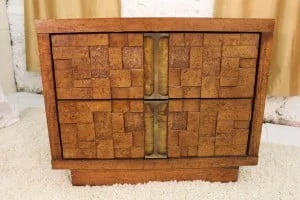
5. “Rhythm of assorted shapes flow across the piece”
6. “Broken contrasts and agitations suggest dynamic force”
As a final thought; there is just such an incredible variety of abstract art pieces even within the same style that you can just never have enough. I remember someone told me one time I would like to buy a piece of art but I don’t have the space. And I thought unless your walls are covered floor to ceiling in each room; there is and always should be enough room for a piece of abstract art in your home.
And that is all folks! If you enjoyed this blog check out my other posts. Share it with your friends and subscribe so we can grow and learn together. Leave me a comment below, on social media, or send me an email with your thoughts or suggestions.
Cheers!
ps. the only photo credit I need to give for this blog is to the owner of that Adrian Pearsall sofa who I don’t remember where I saved it from and I apologize for that.
Credit: Text, black and white images and other information from “Painting and Understanding abstract art” by Leonard Brooks book.

